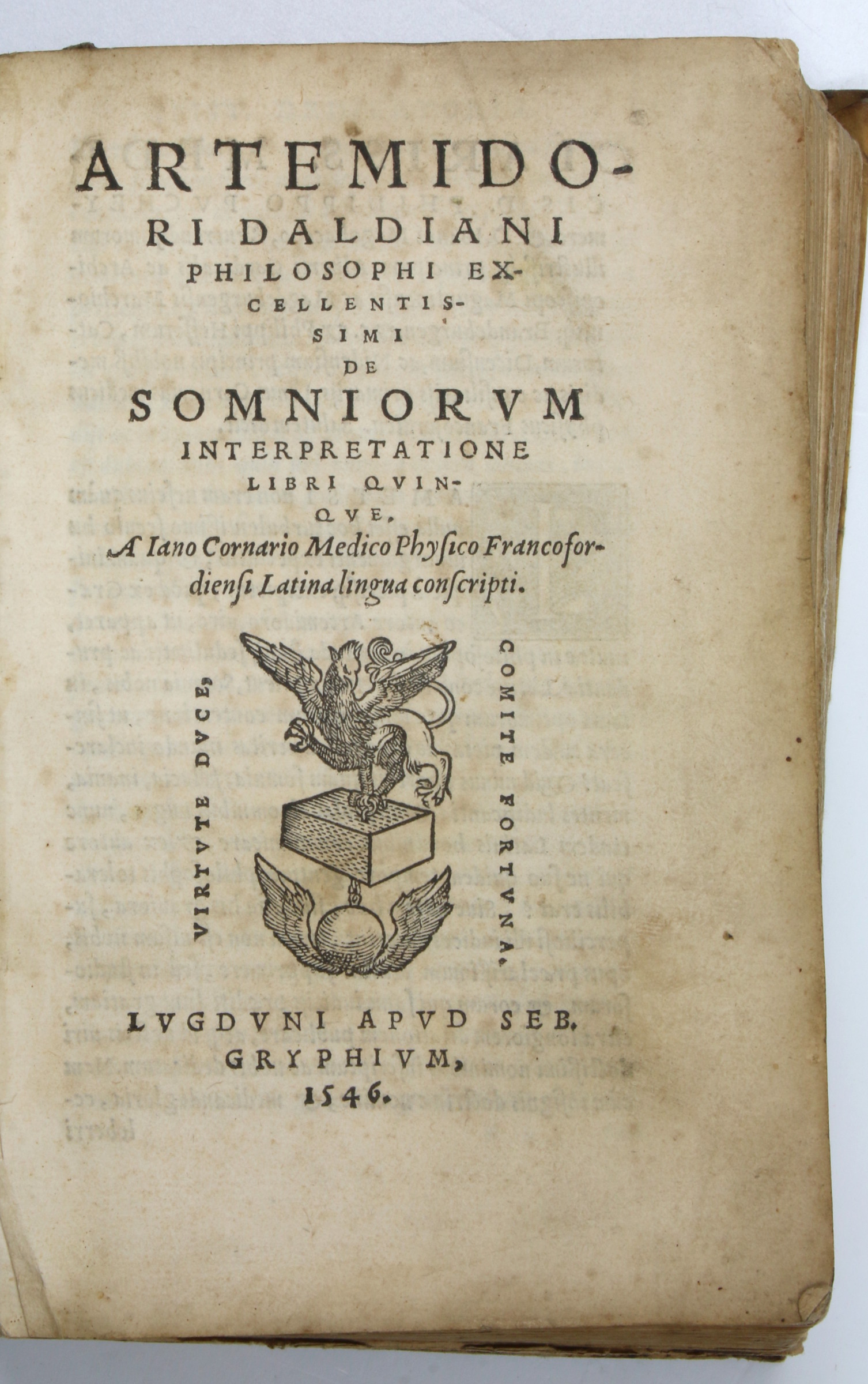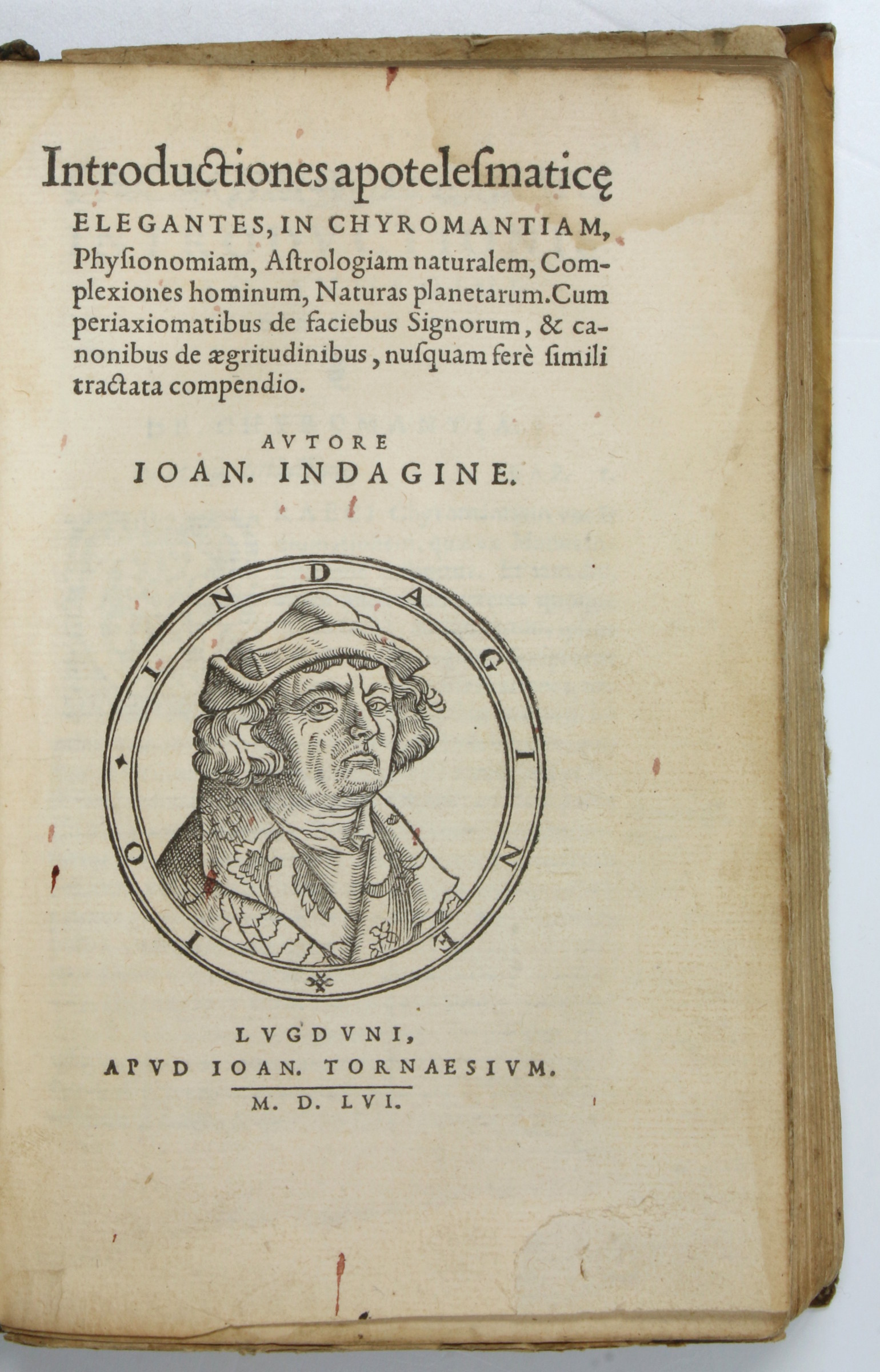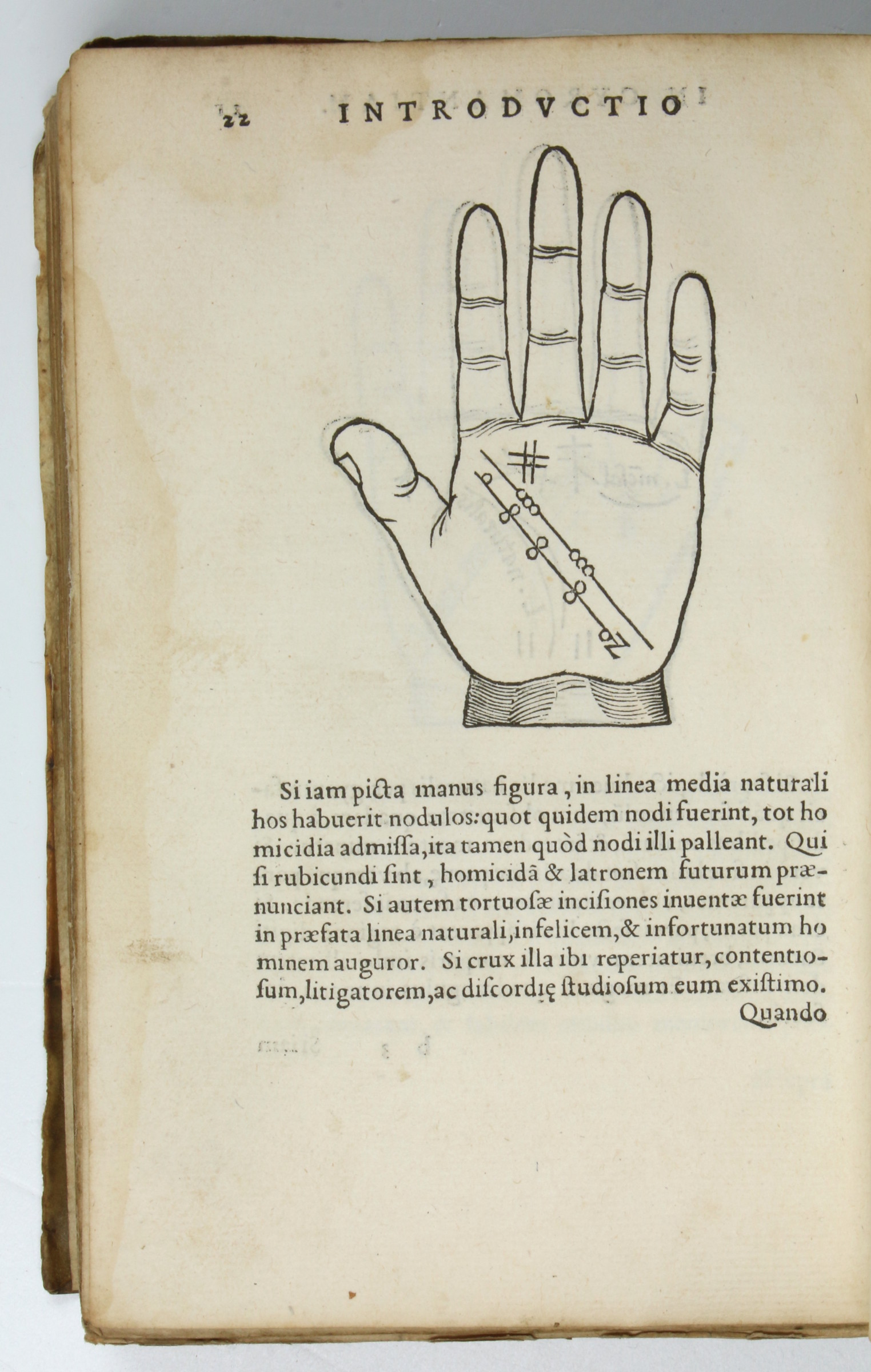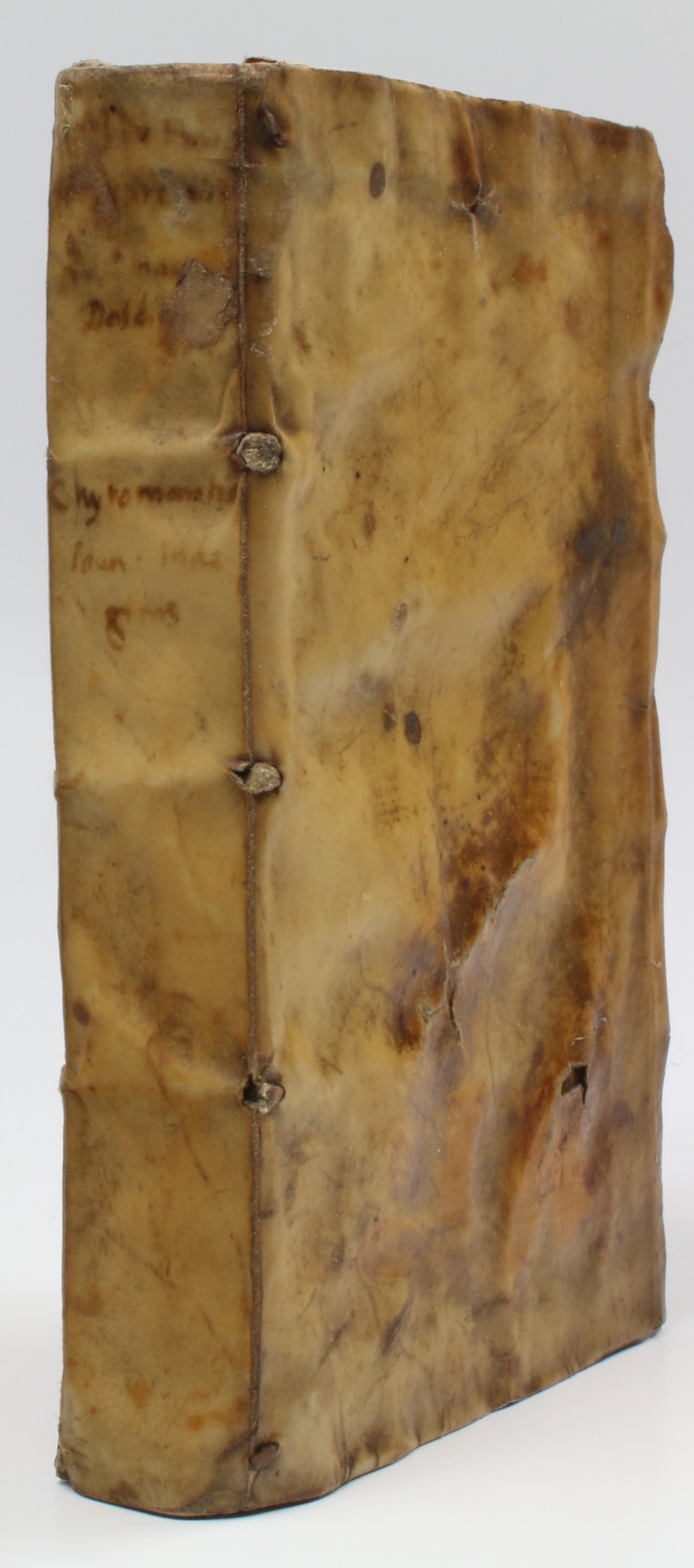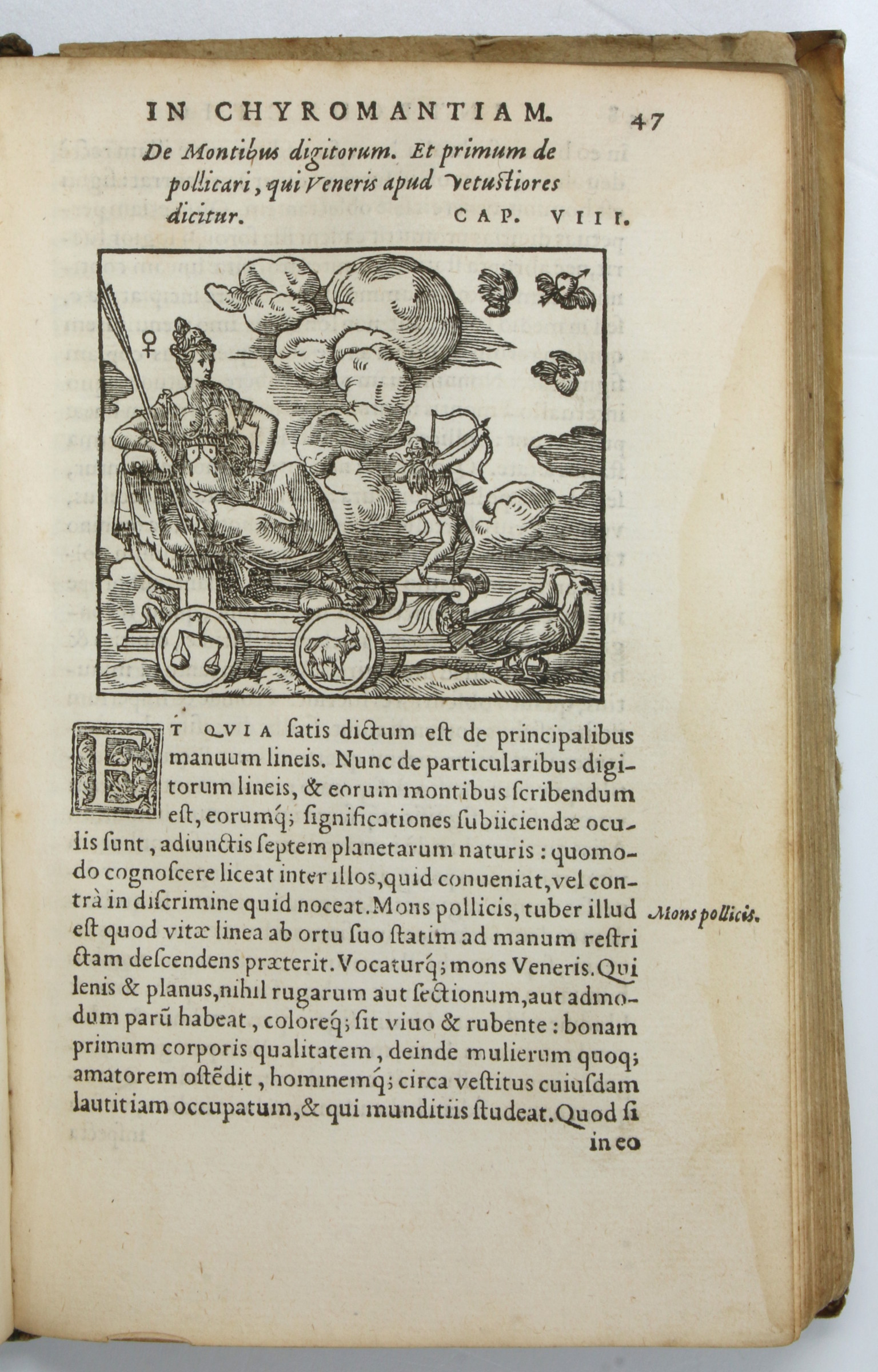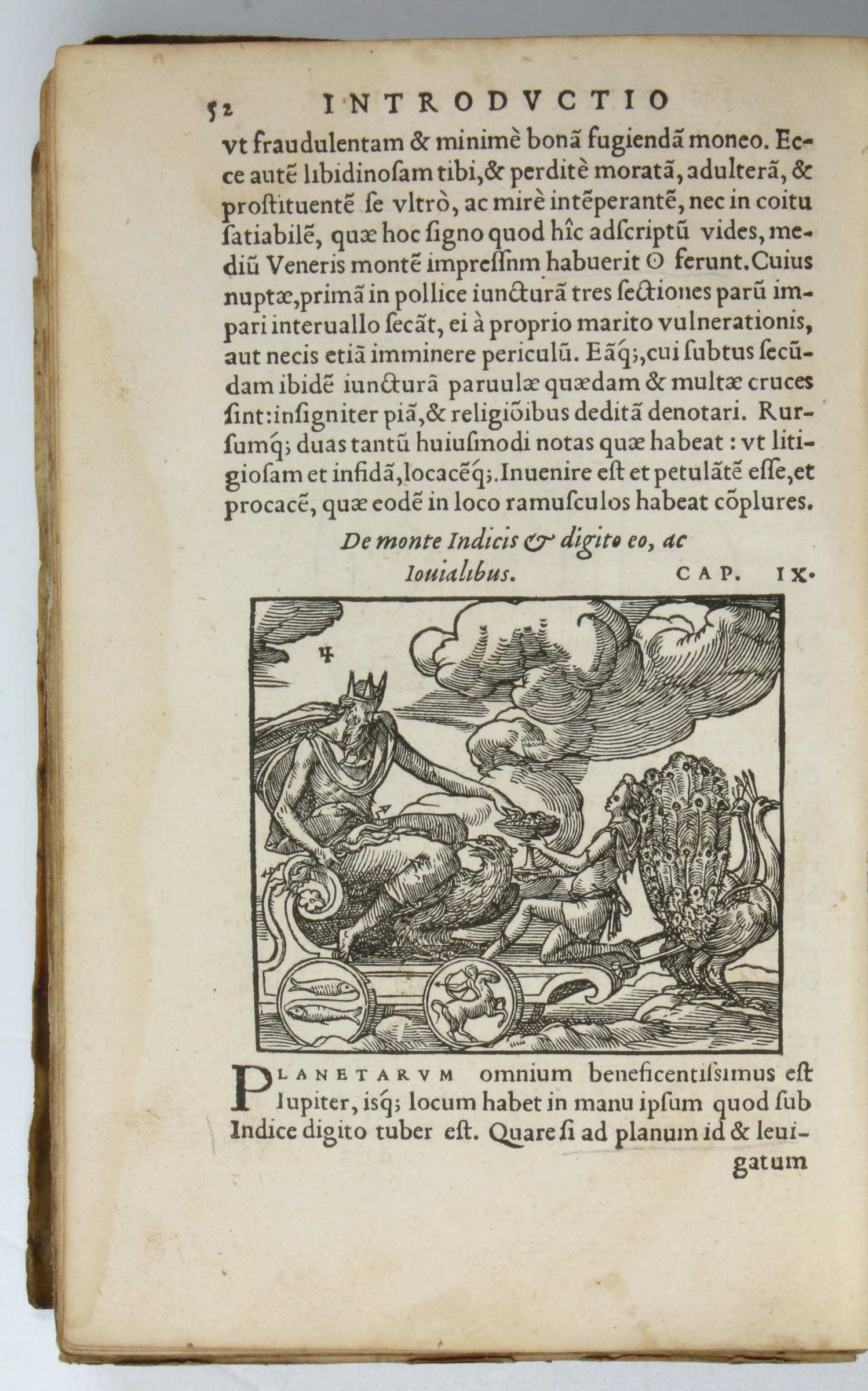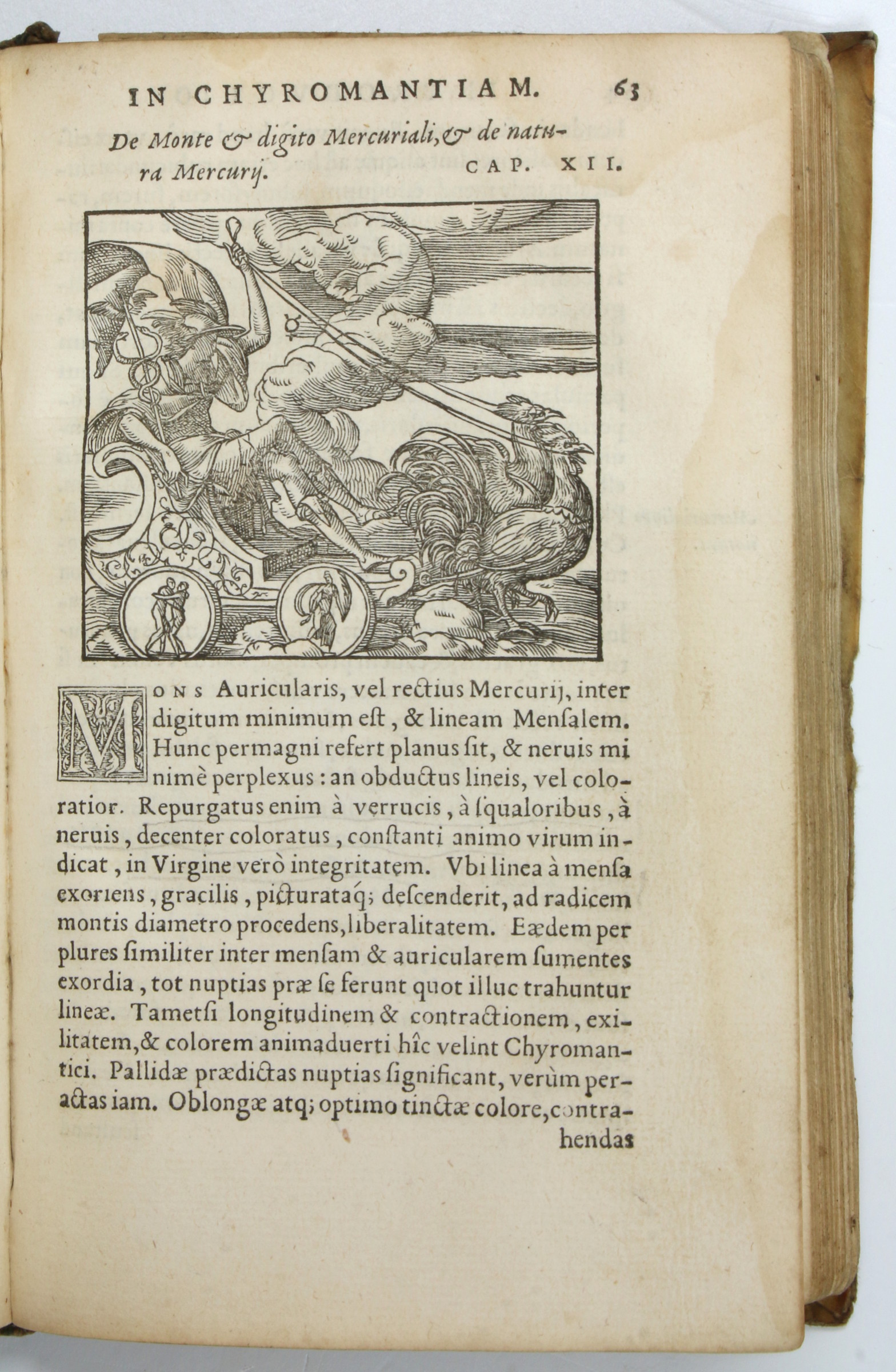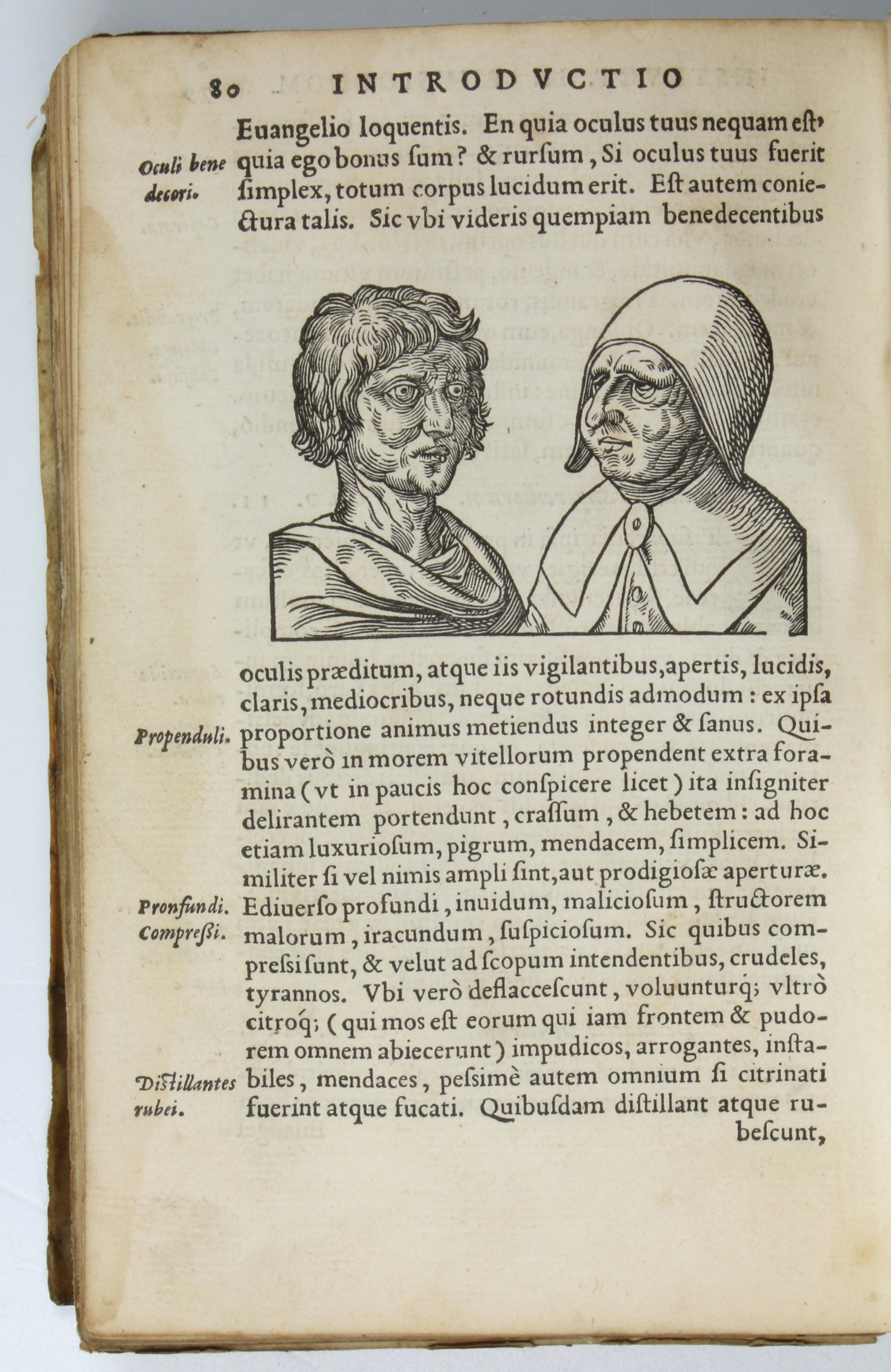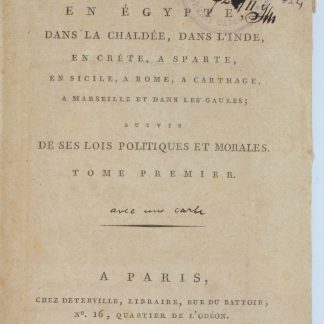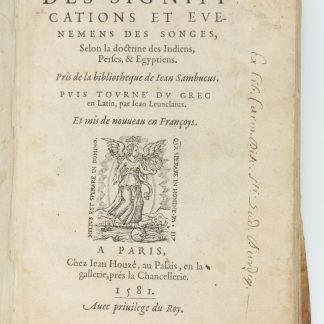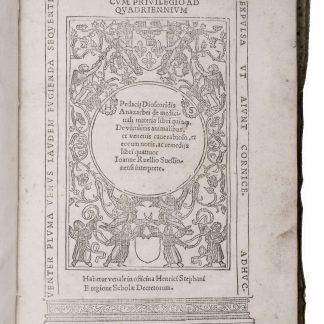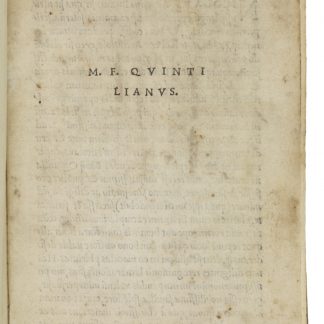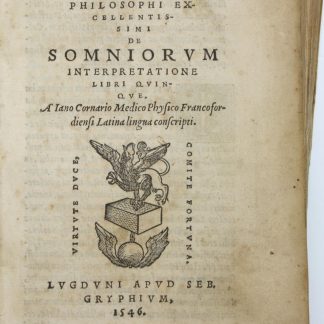Divination through dream interpretation in the 16th century
De somniorum interpretatione.
8vo (110 x 172 mm). 296 pp. With woodcut device on title-page and woocut initials.
(Bound with) II: Indagine, Johannes. Introductiones apotelesmatice elegantes, in chyromantiam, physionomiam, astrologiam naturalem [...]. Lyon, Jean de Tournes, 1556. 182 (instead of 186) pp. (wanting pp. 119-122). With numerous in-text woodcut illustrations of palmistry and mythological scenes. Contemporary limp vellum.
€ 1,500.00
A fascinating volume of two 16th century divination texts, beginning with the famous work on the interpretation of dreams by the Greek Artemidorus (b. ca. 170) , translated by J. Cornarius. The earliest extant Greek work on the subject, its value is great and twofold: both as a working divination text of the second century, and due to the important quotations from other, lost ancient texts collected in it (Tusc. Lex. Lit., p. 42). Its influence was certainly significant to Renaissance magic and thought, which, while forms of divination were often sporadically criminalized, was a culture on the whole eternally hungry for textbooks on different divinatory practices. The book's pioneering importance was once more realized in the 19th century by Arthur Schopenhauer and Sigmund Freud.
Another such example comes in the second text bound alongside "De somniorum interpretatione", the "Introductiones apotelesmatice elegantes" of German theologian and astrologer Johannes Indagine (1467-1537). This was his most important work and serves as an interesting complement to Artemidorus. Famous as an astrologer and practitioner of palmistry (also known as chiromancy), Indagine illustrated his text with numerous diagrams on the art of palm-reading and the use of horoscopes. Despite facing similar pushback from the church, this became a standard work, shaping the theories of palmistry in particular.
From a Czech private collection.
Light wear and soiling to vellum; a hint of waterstaining to text block, more pronounced near end. Two leaves lacking from Indagine; front flyleaf missing. Altogether in good condition.
I: Adams A 2038. BM-STC French 32. Hoffmann I, 382.
II: Caillet II, 300. This edition not in BM-STC French or Adams.

